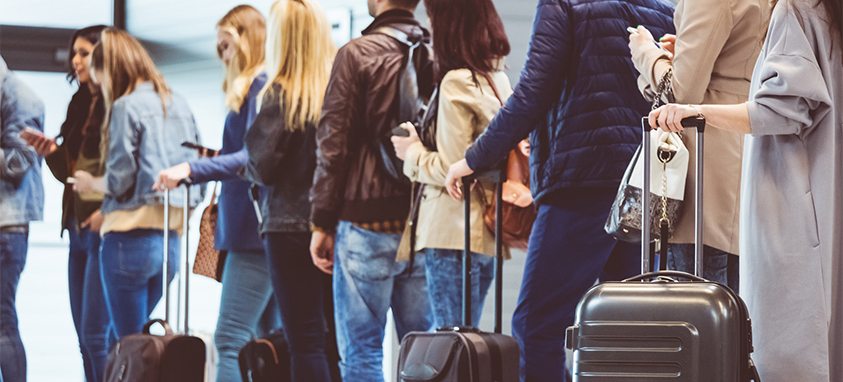Almost everyone can agree: there are fewer things more stressful than long lines when you’re rushing to make your flight on time. Removing laptops from bags, taking shoes off or simply printing a boarding pass can take longer than anticipated. But the travel industry isn’t blind to these problems; in fact, they have already started testing and implementing solutions to reduce time getting through security and allow extra time to relax before your trip. Here are some improvements that might soon be coming to an airport near you.
Intelligent Portals
Smart gates have already been implemented in Dubai International Airport (DXB). How do they work? If you’re a UAE resident, GCC national or passport holder from a country eligible for visa on arrival, bring along a passport, Emirates ID, e-gate card or QR code (which you can receive through the General Directorate of Residency and Foreigners Affairs’ mobile app). Simply place the photo page on a scanner, step through a gate for an eye scan and then proceed through. First-time scanners must register with immigration officers after their first scan, but the process is simple thereafter.
Michael Ibbitson, executive vice president of technology and infrastructure at Dubai Airports explains that the use of smart gates can smooth the security process by slashing transaction times to just 10 to 15 seconds and shortening queues.
Liquid ID
In September, the TSA approved ConneCT Scanners, a new airport security scanner that will enable travelers to avoid taking liquids and electronics out of their bags, similar to members of the TSA PreCheck program.
Created by Analogic, the scanners provide a 3D-image of the contents within luggage, allowing agents to visually check bags for prohibited items and alleviate regularly sifting through luggage by hand. Though travelers would still have to remove shoes, belts and jackets, the change would dramatically increase the flow of traffic.
“We’ve been talking about the checkpoint of the future, but the future is now,” said Mark Laustra, vice president of global business development and government programs at Analogic, in an interview in Travel + Leisure. “The checkpoint of the future is moving passengers very quickly.”
Just-In-Time Check-In Assistance
If you flew from Kansai International Airport (KIX) or Osaka International Airport (ITAMI) in February, you might have met KATE during the check-in process.
KATE, created by SITA, uses artificial intelligence combined with geo-navigation to travel to congested areas to assist the check-in process. Collision avoidance technology and various data sources determine where the robot is needed within the airport. Should its battery run on low, it even has the ability to find power sources to charge itself.
Sumesh Patel, president of SITA for Asia-Pacific said in a statement that “Japan has always been a forerunner in robotic innovations and intelligent technology, [and] we are thrilled to be partnering with the airport to introduce intelligent machines to improve the passenger experience.”





